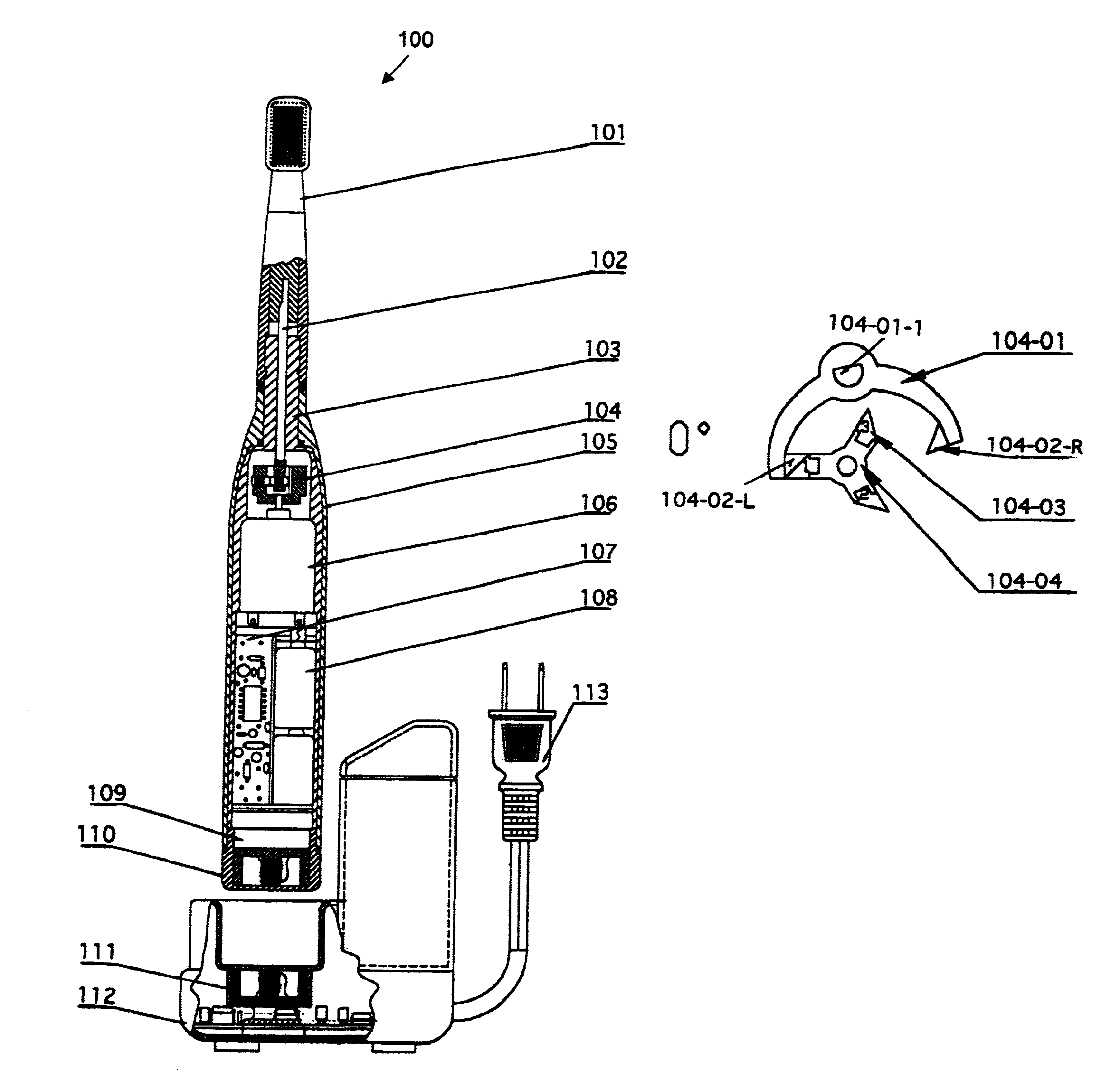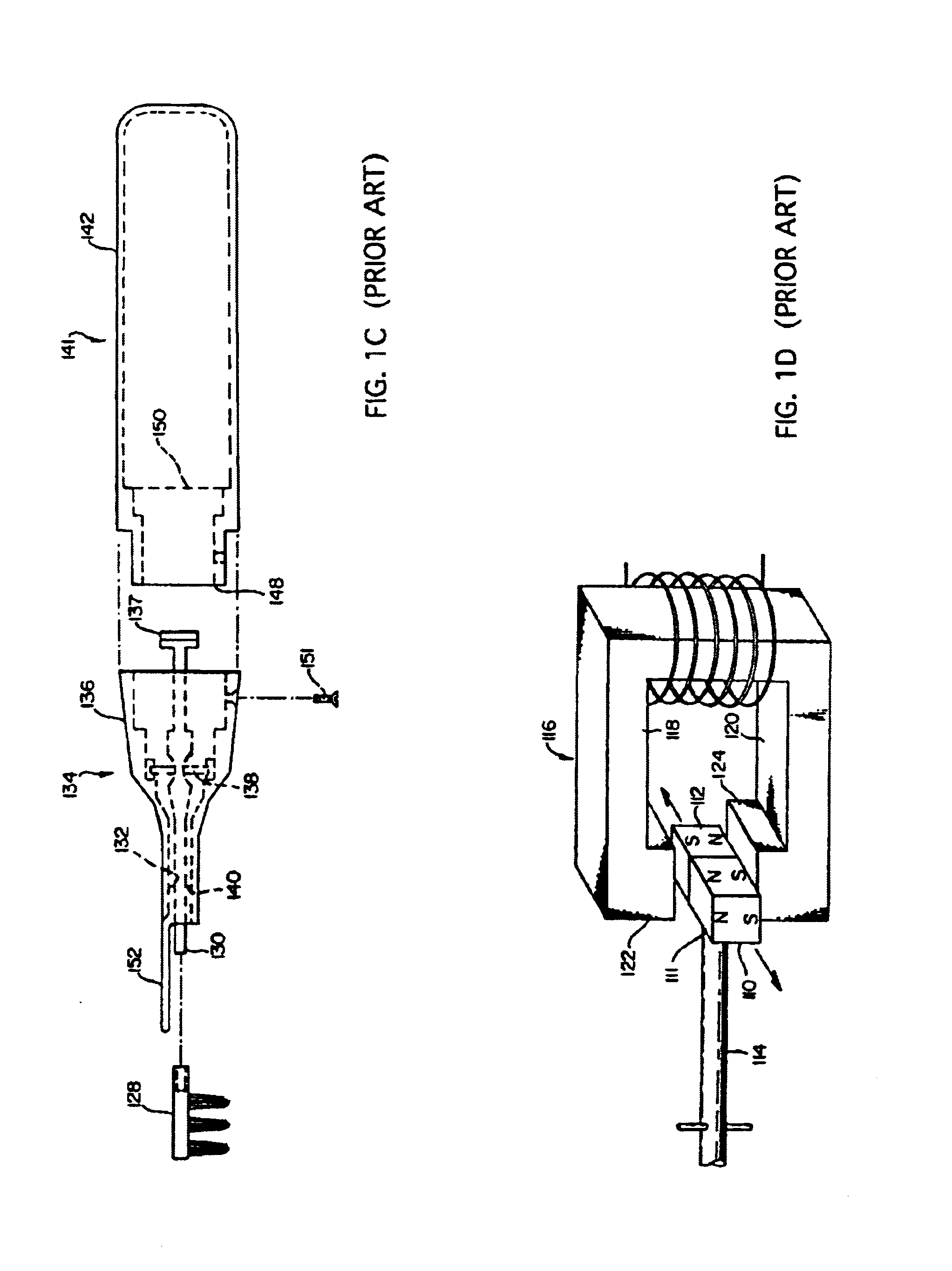Automatic power-driven toothbrushes
a power-driven toothbrush and automatic technology, applied in the field of dental hygiene devices, can solve the problems of difficulty in generating difficulty in providing a higher frequency of bristle movement of conventional power-driven toothbrushes, and many major limitations of conventional power-driven toothbrush manufacturers and designers, and achieve the effect of higher charging capacity
- Summary
- Abstract
- Description
- Claims
- Application Information
AI Technical Summary
Benefits of technology
Problems solved by technology
Method used
Image
Examples
Embodiment Construction
Referring to FIG. 2A for a cross sectional view of a vibrating toothbrush 100 of this invention. The toothbrush includes an elongated hollow case 105 for enclosing and protecting the electrical and mechanical components contained in the case and also functions as a handle that a user of the toothbrush can conveniently hold and control and move the toothbrush. The elongated hollow case 105 is generally circular in cross section and includes a lower body portion and upper neck portion. The lower body portion has a length of about ten to fifteen centimeters and a diameter ranging from 2 to 4 centimeters. The upper neck portion has a length of about three to five centimeters and a diameter of about 0.5 to 1.0 centimeter. A brush head 101 is then mounted onto the upper neck. The side view and front view of the brush head 101 is shown in FIGS. 2B and 2C respectively. The brush head 101 with the bristles is powered by the rechargeable batteries 108 to vibrate as that shown in FIGS. 2D and ...
PUM
 Login to View More
Login to View More Abstract
Description
Claims
Application Information
 Login to View More
Login to View More - R&D
- Intellectual Property
- Life Sciences
- Materials
- Tech Scout
- Unparalleled Data Quality
- Higher Quality Content
- 60% Fewer Hallucinations
Browse by: Latest US Patents, China's latest patents, Technical Efficacy Thesaurus, Application Domain, Technology Topic, Popular Technical Reports.
© 2025 PatSnap. All rights reserved.Legal|Privacy policy|Modern Slavery Act Transparency Statement|Sitemap|About US| Contact US: help@patsnap.com



